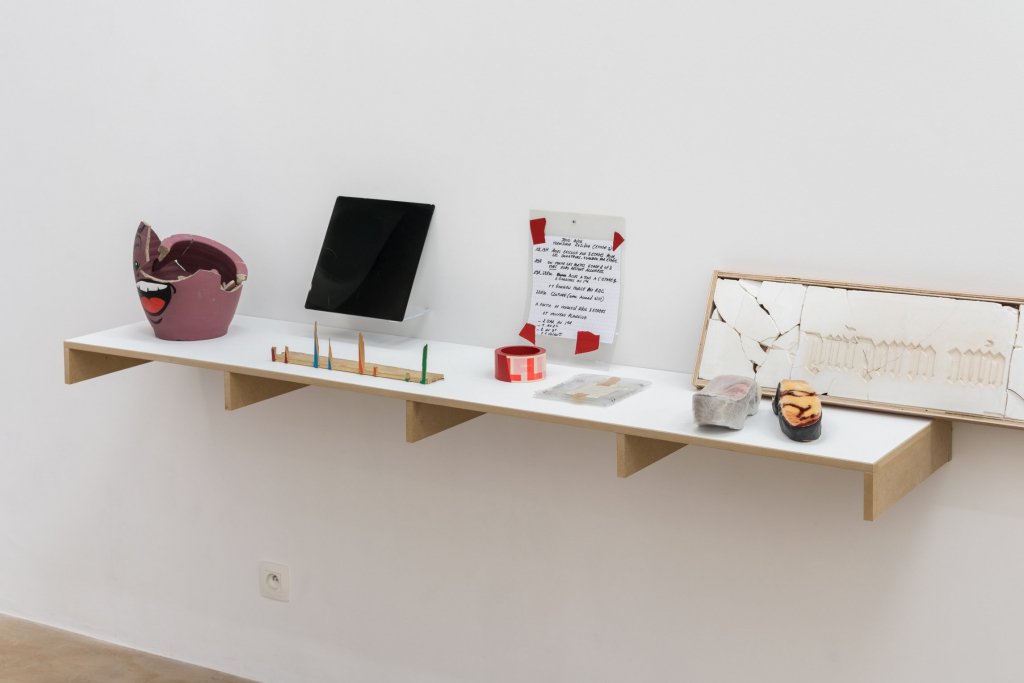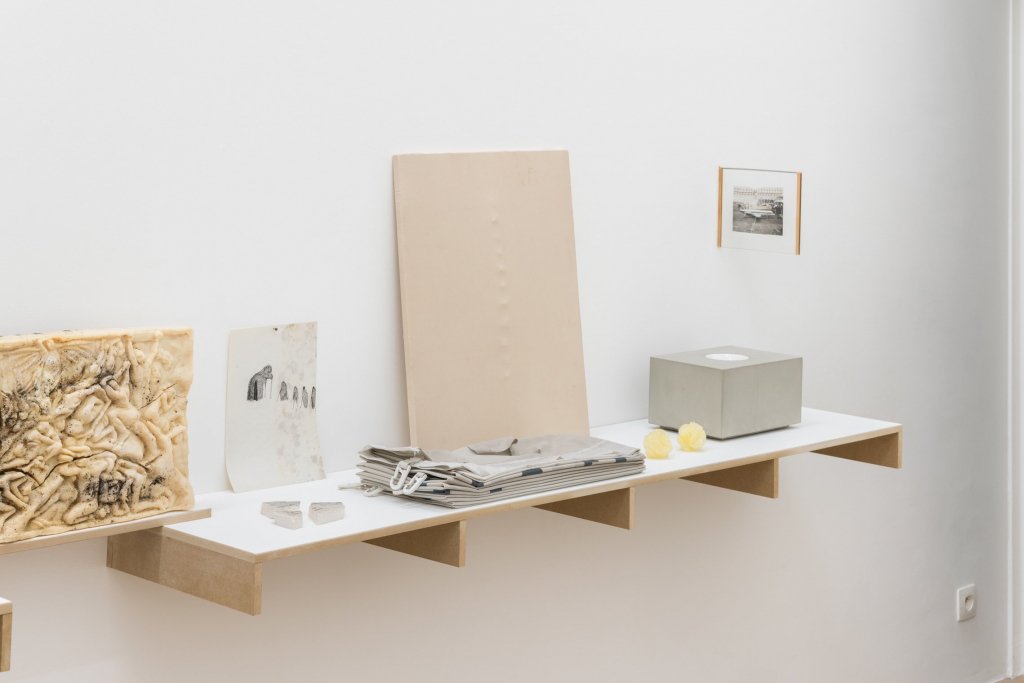Broken intentions: on damaged contemporary art
Collectors and museums worried about broken artworks should remember that artist’s intentions can fix many issues, including material ones.
Before 20th century modernity, broken artworks were more easily recognised as such. Artworks used to be beautiful objects, and when they stopped being beautiful—think of a slashed canvas—they would stop being artworks too. Things like the famous urinal-turned-artwork changed that. Artworks became ugly things, and within this confusion, what counted as a broken artwork anymore? A slash or a crack no longer messed with the artiness of something. Perhaps these faults even boosted the piece, perhaps they were even intended.
Philosophical debates have it that the intention of the artist might now play a big role in distinguishing between broken and unbroken artworks. Broken artist’s intentions make for broken art more than cracks and slashes. If the artist wishes for a burnt canvas, no fire can harm the painting. This is the theory.
The story is different in practice. Artworks have a life beyond the artist’s studio. Artist’s intentions still matter in the outside world, but so do other things like value. A collector worries about the integrity of their purchases. A museum worries about the preservation of a public collection. Broken artworks can still be considered broken even if the artist’s intentions are respected. Unbroken ones can still be considered unbroken even if the artist’s intentions are not respected.

Installation shot of Les choses d’ ici bas, an exhibition of damaged artworks organized by artists Florin Filleul & Fabrice Schneider at Duflon Racz gallery in Brussels, July 2020. Photgraphy: Fabrice Schneider. 
Installation shot of Les choses d’ ici bas, an exhibition of damaged artworks organized by artists Florin Filleul & Fabrice Schneider at Duflon Racz gallery in Brussels, July 2020. Photgraphy: Fabrice Schneider. 
Installation shot of Les choses d’ ici bas, an exhibition of damaged artworks organized by artists Florin Filleul & Fabrice Schneider at Duflon Racz gallery in Brussels, July 2020. Photgraphy: Fabrice Schneider.
The job of evaluating damage in contemporary art is especially difficult. It is torn between listening to the artist’s intentions and the will of an outside world made of collectors, museums, informed and naive audiences. No longer can the insurance expertise be based on mere slashes and cracks. Sure, the preserved material aspect of a work still matters, but it does in the midst of several other considerations, at the core of which there is the artist’s intention.
In a note titled “Insights on Art,” the insurance company Chubb mentions that “in the vast majority of cases where an artwork is damaged, the artist is willing to be involved—actively or as a consultant—in the conservation.” Actually, the artist must be involved if alive. Laws like the U.S. Visual Artists Rights Act even provide guidelines, explaining that artists have the choice of embracing damages and declaring them as “inherent vices:” things that were supposed to happen. In reality, litigation occurs. Collectors, museums, dealers, conservators and artists can and do disagree. Famous is the lost lawsuit of a collector who saw his million dollars Cady Noland’s artwork vanished into thin air after the artist disavowed it due to apparent damage.
Those who see the contemporary artist as the god that can give value to otherwise worthless things, and just as well take the value away from them, should be reminded of the law of supply and demand. Artists are no Midas, they don’t turn shit into gold. If lucky and able to work their way around in the jungle of collectors and museums, they might be able to turn shit into something that people value like gold. The difference is subtle but fundamental. The act of considering their artwork as broken out of sheer caprice is the kind of craziness most artists can’t afford. The ultimate choice of total loss and disavowing must come for good reason, or rarely out of pathological obsession for control like in the case of Cady Noland.

Source: cadynoland.com
Another example of these hyper controlled intentions is Donald Judd, who not only made artworks that were especially easy to mess up, he was also especially picky about them once they were finished. His famous fabrication instructions were sold as certificates, whose legal status was partially unclear. For example, he disavowed pieces that, according to him, were damaged insofar as they were wrongly fabricated by those owning the certificate. Some of Judd’s instructions were nonetheless rather vague, and left room for interpretation and consequent quarrelling with his collectors—Panza di Biumo above all—who for him didn’t respect the instructions. Museums didn’t have it easier, and “broken” fabrication of some of Judd’s pieces were even discontinued from public collections–the Guggenheim for example–in virtue of this confusion between artist’s intention and realization of the work.

Source: Yale University Press.
One might ask about the role of the restorer in cases like this. A recent chat with Isabella Villafranca Soissons, director of the restoration centre Open Care in Milan [Here is our feature on the centre. Ed.], was especially illuminating. She mentioned the word mediator. In her opinion, the restorer must moderate between the intention of the artists and the needs of the artwork’s owner. Only after consulting with alive artists or the estate of those who passed, can the restorer start her intervention on the material world, which sometimes happens along with artists themselves. The collaboration is not always easy, she says, as artists change their intentions and poetics over time, and there is a concern about preserving the work as it was originally imagined by them. Not many artists agree with their past self, especially when their careers span decades. The restorer as a mediator, she continues, can even take the shape of the consultant: especially young artists come to her studio asking for advice about materials and the future evolution of their pieces.
Coming back to cracks and slashes, we recently spoke to an artist who told us the story of one of his collectors refusing to accept the change in the piece as inherent vice. The concrete part of the artwork cracked due to variations in the room temperature, something the artist predicted and therefore accepted as part of the artwork’s nature. The collector didn’t agree and asked for restoration or replacement, which shortly happened at the artist’s expense. Those collectors and museums believing that contemporary art is more difficult to preserve and therefore to acquire should learn from this story. Much contemporary art might be more fleeting than the classical oil on canvas, yet easier to fix considering the willingness of alive artists to treat the final form with more flexibility.

Almost always it is the cultural value rather than the material one that makes for the economical value of a contemporary artwork. As long as the former is preserved by respecting the intention of the artist, the material decay might not be a problem. Art is not like a car that stops being valuable because its rusty engine doesn’t turn on. Cultural value and artist’s intentions do matter, and they should be kept in good shape through texts and archives. If we were looking for an extra role for art writing, we might have just found one. Fetishism of the object follows.
December 2, 2020
